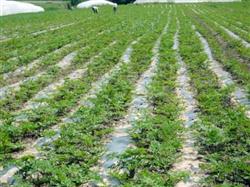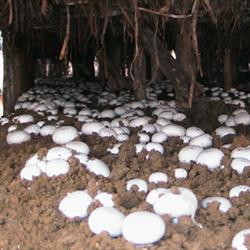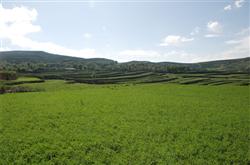What should Angelica sinensis pay attention to when planting with plastic film mulching?

What should Angelica sinensis pay attention to when planting with plastic film mulching? Please introduce Angelica, Umbelliferae, perennial herbs, root hypertrophy. The leaves are several pinnately compound. Summer flowering, white flowers, compound umbels. The fruit is long oval and the lateral ribs have broad wings. Produced in Gansu, Shaanxi, Sichuan, Hubei, Yunnan, Guizhou and other provinces. In traditional Chinese medicine, the root is used as medicine, warm in nature, sweet and bitter in taste, invigorating the blood, regulating menstruation and relieving pain, mainly treating blood deficiency, irregular menstruation, dysmenorrhea, amenorrhea, rheumatic arthralgia, fall injury, carbuncle and so on. The root contains volatile oil, which calms and regulates the activity of the uterus. The water-soluble components of Angelica sinensis have the effect of stimulating uterus and analgesia. The cultivation technique of Angelica sinensis covered with plastic film is an effective measure to realize the "two high and one excellent" production of Angelica sinensis. Angelica sinensis can achieve obvious effect of increasing production and income by using plastic film mulching and its supporting technology. 1. Pick the stubble. The Eryin terraced field with rich and loose, deep soil layer and high content of organic matter was selected. It is better to use wheat stubble and avoid continuous cropping. The previous stubble ploughed deeply, combined with cultivated land before sowing, fertilized and ridged. two。 Apply sufficient base fertilizer. Seedling application of farm manure 5000 kg, oil residue 10kg 100kg, combined with ploughing before sowing, concentrated deep application. Fertilizer mu application of diammonium phosphate 20kg, ammonium nitrate 10kg, combined with ridge concentrated application into the ridge. 3. Ridging and film mulching. Choose 70-80 cm wide, 0.008 cm or 0.005 cm thick ultra-thin film, strong micro-film, 3-5 kg per mu. Requires ridge width of 60 cm, ridge spacing of 40 cm, ridge height of 10 cm, so that straight, flat, light. Immediately after ridging, film mulching is required to be extended, solid and strict. 4. Plant it in time. The day before planting, after shaking the selected superior seedlings in the pure land, dip 1.5 kg of Angelica sinensis root into the roots per mu, let the medicine solution wrap the seedlings, dry them and plant them, or use 5 kg line phosphorus granules per mu to 50 kg 60 kg of fine sand and sprinkle them on the top of the seedlings during transplanting. Two rows are planted in each ridge, the row spacing is 40 cm, the plant spacing is about 25 cm, and there are about 5000 seedlings per mu. When planting, punch holes in the ridge, the holes staggered, showing a triangle, and then move the seedlings into the holes, two seedlings are planted in each hole, the top buds of the seedlings are 2-3 cm away from the plastic film, compacted with fine soil, and sealed tightly. 5. Release the seedlings in time. About 10 days after transplanting, iron nails can be used to break the hard soil layer at the top of the seedling in the early morning, and then sprinkle a little fine soil on the top of the seedling to prevent the buds from being burned by the sun. 6. Field management. ① checked seedlings, replenished seedlings and inter-seedlings in time, and left one healthy seedling in each hole. Weeds in ② ridges and furrows were hoed frequently and weeds in the film were cleared in time. ③ uses 50 grams of potassium dihydrogen phosphate per mu. When the seedlings are weak and have the phenomenon of de-fertilizing, urea 0.5kg, add 45kg water, spray once every 7 days, a total of 2 times 3 times. Angelica sinensis with ④ plastic film should be harvested late before and after Frosts Descent. Click to get more Angelica planting technology click to get more medicinal material planting technology
- Prev

Which season is suitable for growing Agaricus bisporus?
Which season is suitable for growing Agaricus bisporus? Please introduce that Agaricus bisporus is a kind of low-temperature fruiting fungus, which produces fruiting body only when it is below 18 ℃, and the optimum temperature for mushroom production is about 16 ℃. Therefore, the cultivation season is mostly arranged in autumn and winter and lasts until early spring. Due to the differences in climate and topography and microclimate, but.
- Next

How to grow Angelica sinensis?
How to plant Angelica sinensis? Please introduce the method of seed seedling transplanting and propagation of Angelica sinensis. The harvest in the second year of autumn direct seeding or the harvest of spring direct seeding in the same year were also found in lower altitude areas (1500-1800 m), but the yield and quality were low. The nursery ground chooses the shady and moist mountain or the Eryin mountain, the pit that holds water but does not accumulate water.
Related
- Fuxing push coffee new agricultural production and marketing class: lack of small-scale processing plants
- Jujube rice field leisure farm deep ploughing Yilan for five years to create a space for organic food and play
- Nongyu Farm-A trial of organic papaya for brave women with advanced technology
- Four points for attention in the prevention and control of diseases and insect pests of edible fungi
- How to add nutrient solution to Edible Fungi
- Is there any good way to control edible fungus mites?
- Open Inoculation Technology of Edible Fungi
- Is there any clever way to use fertilizer for edible fungus in winter?
- What agents are used to kill the pathogens of edible fungi in the mushroom shed?
- Rapid drying of Edible Fungi

